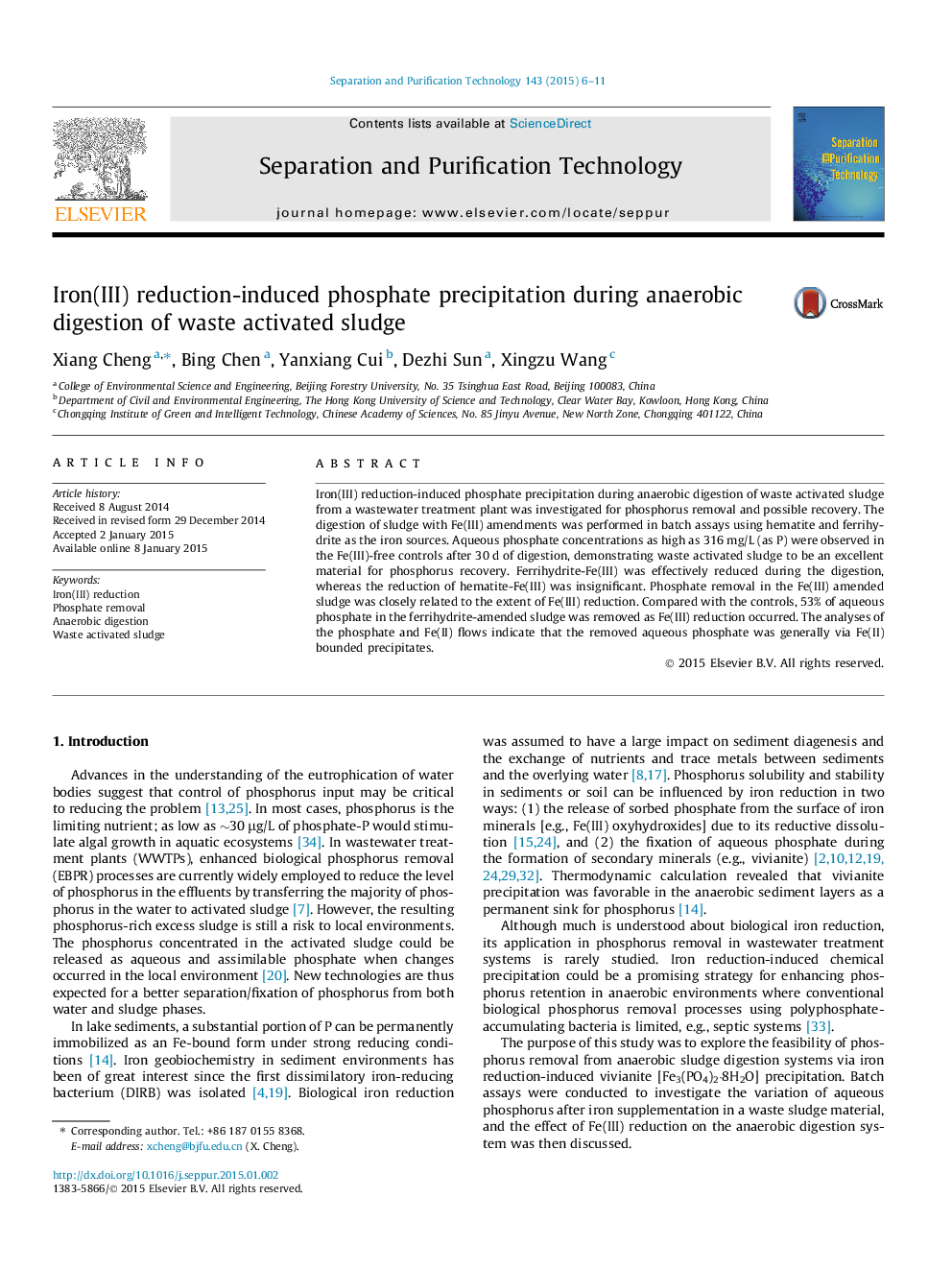| Article ID | Journal | Published Year | Pages | File Type |
|---|---|---|---|---|
| 640534 | Separation and Purification Technology | 2015 | 6 Pages |
•Fe(III) reduction-induced P precipitation as a new method for P recovery.•Waste activated sludge can be an ideal material for phosphate recovery.•Ferrihydrite-Fe(III) was effectively reduced in the sludge digestion system.•P removal was closely related to the extent of Fe(III) reduction.•Fe(III) supplementation did not evidently influence anaerobic sludge digestion.
Iron(III) reduction-induced phosphate precipitation during anaerobic digestion of waste activated sludge from a wastewater treatment plant was investigated for phosphorus removal and possible recovery. The digestion of sludge with Fe(III) amendments was performed in batch assays using hematite and ferrihydrite as the iron sources. Aqueous phosphate concentrations as high as 316 mg/L (as P) were observed in the Fe(III)-free controls after 30 d of digestion, demonstrating waste activated sludge to be an excellent material for phosphorus recovery. Ferrihydrite-Fe(III) was effectively reduced during the digestion, whereas the reduction of hematite-Fe(III) was insignificant. Phosphate removal in the Fe(III) amended sludge was closely related to the extent of Fe(III) reduction. Compared with the controls, 53% of aqueous phosphate in the ferrihydrite-amended sludge was removed as Fe(III) reduction occurred. The analyses of the phosphate and Fe(II) flows indicate that the removed aqueous phosphate was generally via Fe(II) bounded precipitates.
